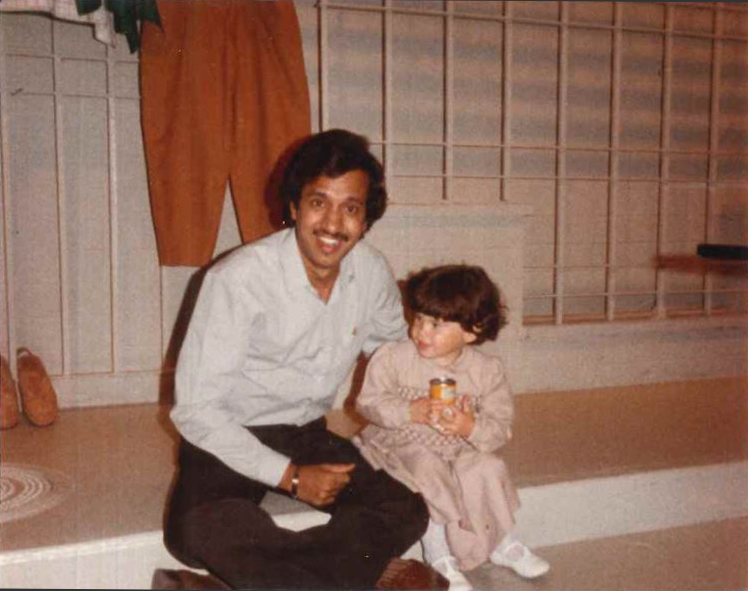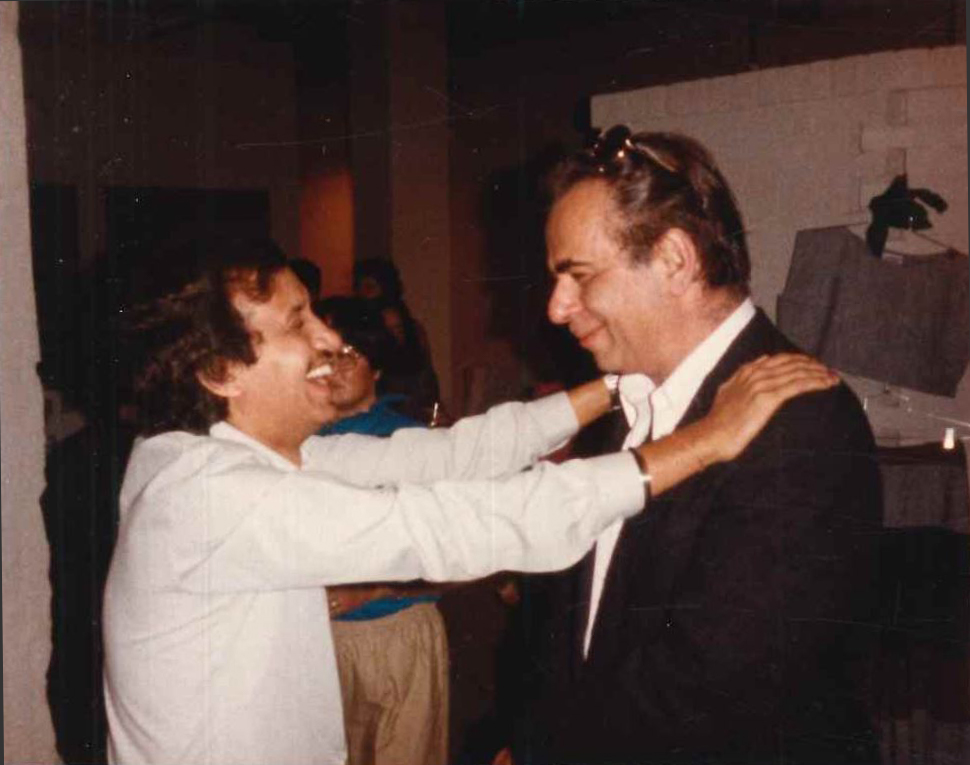
Prakash Kundalia, Willi Smith, and Vijay Agarwal outside of airport in Mumbai, India, ca. 1978
Vijay Agarwal
WilliWear’s beginnings, in December 1975, roughly coincided with my own factory’s beginning. From the outset, our destinies were intertwined, and I could not ask for better people or company with whom to take this journey. In 1975, for most designers in the U.S., producing high-end apparel in India was a taboo! It took Laurie and Willi’s pioneering spirit, a great eye for potential and possibility, and tolerance and patience to develop and manufacture WilliWear successfully in India. Willi painstakingly guided us through many processes and production steps and worked patiently with our pattern masters and sample makers to produce inspired designs and apparel from simple fabrics, which were readily available in India.
Willi and Laurie were extremely close and complemented each other very well. One of my favorite memories of working with them was during a drive in Bombay, when Willi suddenly asked the driver to stop at a traffic circle: he loved the shorts the traffic policeman was wearing. He asked me to get them for him. We managed to get them and the humble shorts, called the “Bombay Shorts” in his collection, went on to become one of his best-selling shorts in the early years.
On another occasion, he saw some school children playing on a playground and was inspired by their simple outfits. From these uniforms, he made a simple blouse which made the inside cover of the New York Times Fashion of the Times issue in his second or third year in business. We also all remember his fatigue pants and poet’s shirt—two styles that helped both of our companies to grow significantly. We couldn’t make enough! Again, the fabrics and designs were very simple.
I also have memories of how, when he would come to India, he would take a large room at the traditional Taj Hotel, and the first thing he would do would be to put up white fabric on all the walls. His goal was to remove all color from his environment, which would allow him to come up with his own inspirations.
One season, when he came to India to develop a collection, he was working morning to evening in his cabin and had completed his designs. It took him three weeks. And then one morning, while sitting in a coffee shop, he started scribbling on tissue paper and in one night, he had changed all of the styles he developed in the last three weeks. In the next few days, we had to make all of the samples once again, and that season was one of the best seasons in WilliWear history.
When I think of Willi, I think of him more as a person than as a designer. The world has seen his genius and his accomplishments, but what has stayed with me are his qualities as a person. I saw how fluidly designs would flow from within him. Like many great artists, he made creativity look simple. I have often been struck by how we could both look at the same picture, and how he would pick up so much more from the picture than I would. Again, this could be due to his sensitive nature as an artist.
I saw in him a great perception for beauty and a strong desire to share this with his friends. He used to collect many artifacts during his visits to India. His colleagues shared with me that once he went to every employee of his company and left a beautiful piece of artisanal work on their desks. His love for sharing beauty could also be seen when he presented his collections to the press; he could hold me captivated watching how he thought about and presented his collections.
He was also very generous and helpful to his friends. I heard that once he met a fellow designer friend at the airport who was struggling. He took out his pad and quickly sketched a top and gave it to her. She later told him that she did very well with the style, and that it helped her tremendously in her business.
He had a zest for life. His capacity to enjoy life, and his love for music and dance were inspiring to watch. He was also very appreciative of other artists and creators across multiple disciplines. He truly was a fashion designer for people on the street!
One season, when he came to India to develop a collection, he was working morning to evening in his cabin and had completed his designs. It took him three weeks. And then one morning, while sitting in a coffee shop, he started scribbling on tissue paper and in one night, he had changed all of the styles he developed in the last three weeks. In the next few days, we had to make all of the samples once again, and that season was one of the best seasons in WilliWear history.
When I think of Willi, I think of him more as a person than as a designer. The world has seen his genius and his accomplishments, but what has stayed with me are his qualities as a person. I saw how fluidly designs would flow from within him. Like many great artists, he made creativity look simple. I have often been struck by how we could both look at the same picture, and how he would pick up so much more from the picture than I would. Again, this could be due to his sensitive nature as an artist.
I saw in him a great perception for beauty and a strong desire to share this with his friends. He used to collect many artifacts during his visits to India. His colleagues shared with me that once he went to every employee of his company and left a beautiful piece of artisanal work on their desks. His love for sharing beauty could also be seen when he presented his collections to the press; he could hold me captivated watching how he thought about and presented his collections.
He was also very generous and helpful to his friends. I heard that once he met a fellow designer friend at the airport who was struggling. He took out his pad and quickly sketched a top and gave it to her. She later told him that she did very well with the style, and that it helped her tremendously in her business.
He had a zest for life. His capacity to enjoy life, and his love for music and dance were inspiring to watch. He was also very appreciative of other artists and creators across multiple disciplines. He truly was a fashion designer for people on the street!




